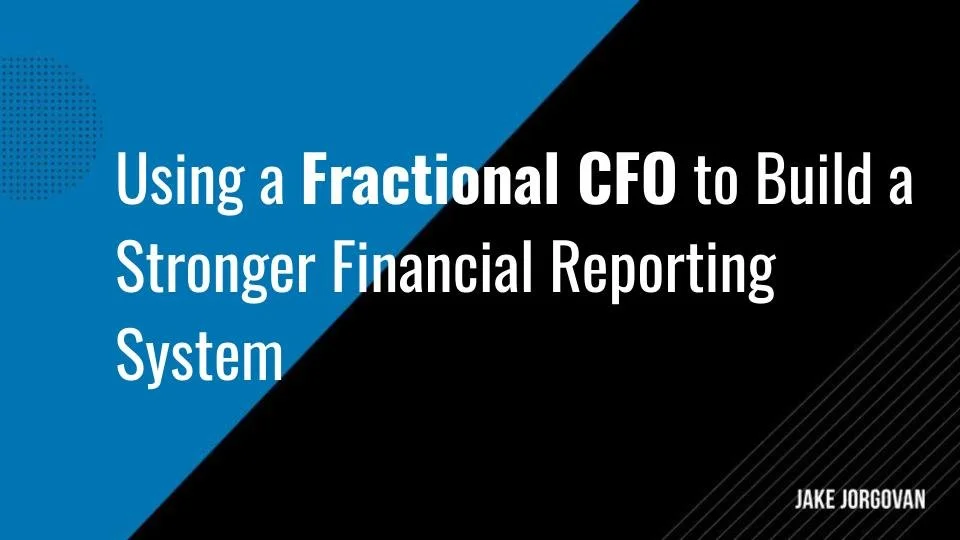How to Integrate Tax Planning Into Wealth and Portfolio Management
Effective tax planning is crucial for long-term wealth management.
Without it, even the best investment strategies can fall short.
Tax-efficient investing maximizes returns by minimizing unnecessary tax burdens.
Integrating tax planning into your portfolio management is a necessity.
This article explores how you can optimize your wealth strategy by aligning tax planning with your investment decisions.
We'll cover key tactics, from asset location to capital gains management.
By the end, you'll have actionable steps to ensure your portfolio is tax-smart and growth-driven.
5 Key Strategies for Integrating Tax Planning Into Wealth and Portfolio Management
1) Utilize Tax-Efficient Investment Vehicles (e.g., IRAs, 401(k)s, and HSAs)
Taking advantage of tax-advantaged accounts can boost your long-term wealth by minimizing tax liabilities. Specialized knowledge is required to optimize this strategy, especially when it comes to choosing the right vehicles. This step-by-step guide will show you how to structure your investments with maximum tax efficiency:
Identify tax-advantaged accounts: Consider individual retirement accounts (IRAs), 401(k)s, and health savings accounts (HSAs) as foundational vehicles. These accounts provide deferred or exempt tax benefits.
Understand contribution limits: Stay updated on annual contribution limits, as they directly impact how much capital you can shelter. Maximize your contributions where possible to get the full tax advantage.
Leverage employer matches: If available, contribute enough to your 401(k) to trigger the employer match. This is effectively "free money" you should not leave on the table.
Choose tax-efficient assets: Select investments that align with the tax benefits of your chosen account. For example, high-growth stocks may be better suited for tax-deferred accounts like a traditional IRA.
Monitor required minimum distributions (RMDs): For accounts like traditional IRAs or 401(k)s, pay attention to when RMDs kick in. Failing to withdraw RMDs could result in significant penalties. Plan distributions carefully to avoid surprises.
Insider Tip:
We recommend integrating Roth conversions in years when your taxable income is lower. This allows you to move assets from tax-deferred to tax-free without paying higher taxes, which can be especially useful in years when your income dips below normal levels.
2) Implement Tax-Loss Harvesting to Offset Gains
Offsetting gains with tax-loss harvesting allows you to minimize your tax burden strategically. This approach requires precise timing and knowledge of tax rules to be effective. If implemented correctly, it can enhance the after-tax performance of your portfolio. Here’s how to get started:
Identify underperforming assets: Review your portfolio for investments that have declined in value. These are your candidates for tax-loss harvesting. Make sure the loss is significant enough to justify a sale.
Match losses with gains: Offset your realized capital gains by selling assets at a loss. Capital losses can be used to reduce taxable capital gains, limiting your overall tax liability for the year.
Be aware of the wash-sale rule: Avoid the temptation to buy back the same or a “substantially identical” security within 30 days of selling it. Violating the wash-sale rule disallows the loss for tax purposes, neutralizing the strategy’s benefit.
Carry forward excess losses: If your losses exceed your gains for the year, use up to $3,000 to offset ordinary income. Any remaining losses can be carried forward indefinitely to future tax years.
Monitor long-term vs. short-term implications: Remember that long-term capital gains are taxed at a lower rate than short-term gains. Plan which assets to sell, keeping these different tax rates in mind.
Insider Tip:
We advise pairing tax-loss harvesting with rebalancing. This allows you to maintain your target asset allocation while optimizing for tax efficiency. After harvesting losses, reinvest proceeds into similar but not identical securities to maintain exposure without triggering the wash-sale rule.
3) Prioritize Asset Location by Placing Tax-Inefficient Assets in Tax-Deferred Accounts
Tax efficiency isn’t just about picking the right investments—it’s about placing them in the right accounts. Asset location allows you to make the most of tax-deferred and tax-free environments. This strategy helps maximize after-tax returns while reducing unnecessary tax exposure. Here’s how to do it:
Classify your assets: Distinguish between tax-efficient and tax-inefficient assets. Bonds, REITs, and actively managed funds tend to generate higher ordinary income, making them more tax-inefficient.
Place tax-inefficient assets in tax-deferred accounts: Allocate assets like bonds or high-dividend stocks in tax-deferred accounts, such as traditional IRAs or 401(k)s. Doing this shields you from paying taxes on interest or dividends annually, postponing the tax until withdrawal.
Use taxable accounts for tax-efficient investments: Within your taxable accounts, invest in assets that naturally generate less taxable income, such as index funds or growth stocks. These assets usually grow through capital appreciation rather than generating high levels of annual taxable income.
Leverage tax-free accounts for high-growth assets: High-growth investments should go into Roth IRAs or other tax-free vehicles. Once inside these accounts, growth is not taxed, and you won't owe taxes on withdrawals in retirement.
Revisit your allocations periodically: Adjust your asset location as tax laws or your personal financial situation change. This ensures that your portfolio remains optimized for both returns and tax efficiency.
Insider Tip:
We suggest reviewing your taxable accounts for municipal bonds as an additional layer of tax efficiency. Since municipal bond interest is often exempt from federal (and sometimes state) taxes, it complements the asset location strategy for clients seeking income without adding to their tax burden.
4) Leverage Tax-Advantaged Income Sources, Such as Municipal Bonds
Leveraging tax-advantaged income sources can be a powerful way to optimize your portfolio’s efficiency while reducing tax liability. For high-net-worth individuals, generating tax-free income is not just a perk—it’s an essential strategy for long-term wealth preservation. Let’s break down how to capitalize on these opportunities step by step:
Prioritize municipal bonds: Interest from municipal bonds is often exempt from federal income taxes. For investors in high-tax brackets, this means generating income without triggering significant tax obligations.
Understand the state tax exemption: Some municipal bonds are exempt from both federal and state taxes, especially if they are issued in your home state. This added layer of tax savings can further boost your net returns, especially if you live in a high-tax state.
Consider tax-equivalent yield: Compare the tax-equivalent yield of municipal bonds to taxable bonds to ensure you’re maximizing returns. This calculation helps you determine whether the tax savings on muni bonds outweigh the potentially higher yields of taxable alternatives.
Balance with taxable investments: While municipal bonds are tax-efficient, they might not always offer the highest returns. Use them in conjunction with other income-producing assets to maintain a balanced approach to both growth and income.
Stay aware of AMT implications: Certain private activity municipal bonds may be subject to the alternative minimum tax (AMT). Review this carefully to avoid unexpected tax liabilities that can diminish the tax advantages.
Insider Tip:
We recommend selectively adding Build America Bonds (BABs) into your mix. While taxable, they offer a federal subsidy, boosting their after-tax yield. This makes them a strategic complement to a tax-advantaged income portfolio when aiming for competitive returns without sacrificing tax efficiency.
5) Plan for Capital Gains Tax Timing Through Strategic Selling and Holding Periods
Managing capital gains tax through strategic selling and holding is essential to optimizing long-term returns. Your transactions' timing can save you a substantial amount in taxes or lead to an avoidable higher bill. Here’s how to implement a tax-aware approach to capital gains:
Hold investments for over a year: To benefit from the lower long-term capital gains tax rate, hold assets for more than 12 months. Long-term gains are taxed at preferential rates, which can be significantly lower than short-term rates.
Time your sales to maximize tax efficiency: Review your portfolio regularly and plan your sales for years when your overall taxable income might be lower. This could reduce the tax bracket your capital gains fall under, lowering your tax burden.
Offset gains with losses: Use capital losses from other investments to offset any realized gains. Tax-loss harvesting is particularly effective when managing capital gains, as it allows you to minimize taxes owed on profitable transactions.
Be mindful of the net investment income tax (NIIT): If your modified adjusted gross income (MAGI) exceeds certain thresholds, you may owe an additional 3.8% tax on investment income, including capital gains. Manage your sales accordingly to stay under the thresholds if possible.
Consider charitable contributions: Donating appreciated securities directly to charity allows you to avoid capital gains tax on those assets while receiving a charitable deduction for the full market value.
Insider Tip:
We suggest executing partial sales of appreciated assets near the end of the year, particularly when your income fluctuates. This approach allows you to assess the tax impact and spread gains over multiple tax years. This minimizes exposure to higher rates without missing out on key market opportunities.
Optimize Your Portfolio with Proper Tax Planning
Tax planning is not just a tactic—it's a long-term strategy for wealth preservation.
Ignoring tax implications can erode even the most well-constructed portfolios.
Integrating tax planning into your portfolio isn’t optional; it’s essential for maximizing returns.
As tax laws evolve, so should your approach to managing wealth.
Is your portfolio positioned to thrive in a tax-efficient way?.
Now is the time to ensure every dollar works as hard for you as possible.


















